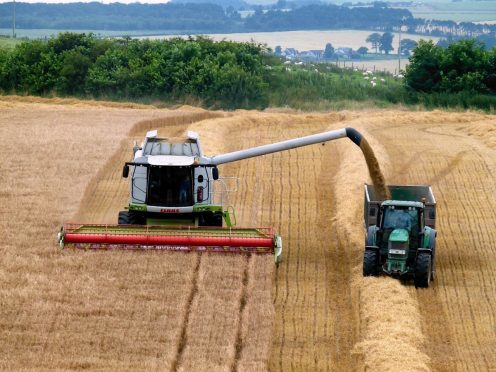The Scottish Government’s final estimates for harvest 2016 confirm disappointing yields with the amount of cereals produced down 11% on last year and 5% below the 10-year average.
Figures from Scotland’s chief statistician reveal Scottish farmers produced 2.8million tonnes of cereals in the year, including 1.6million tonnes of barley and 900,000 tonnes of wheat. There had been no catastrophic weather condition responsible for the drop in production, but instead “less than ideal factors affecting the seedbed, growing conditions and the final harvest”.
There was an 8% fall in overall cereal yields to an average of 2.59 tonnes per acre, ranging from 2.18 tonnes per acre for spring barley to 3.39 tonnes per acre for wheat. This was against a 3% decrease in the area of land sown for cereals to 1.057million acres.
Spring barley production was at its lowest level since 1997 and down 15% on 2015 to 1.3million tonnes. Winter barley production is also down 19% to 329,000 tonnes, while wheat is back 9% to 926,000 tonnes. Production of oats increased to 200,000 tonnes – the first increase since the 1970s.
It was a “particularly poor year” for oilseed rape with yields averaging 1.33 tonnes per acre resulting in the lowest production since records began in 1992, at 102,000 tonnes.
Scottish grain yields in 11% slump
By
Gemma Mackie










